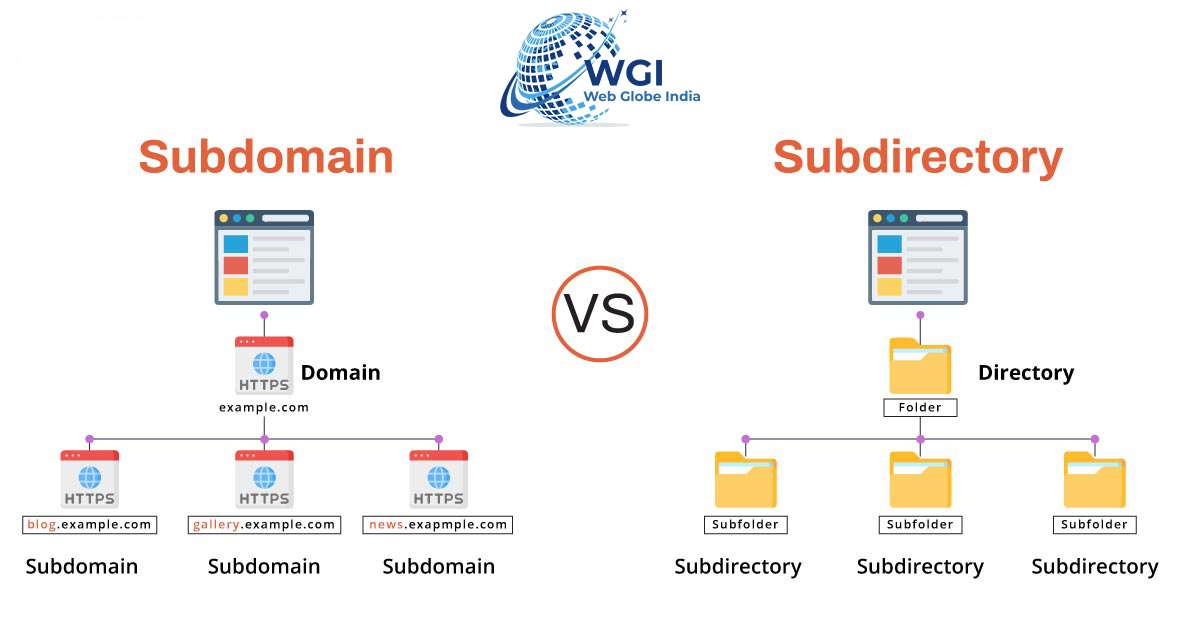In the world of Search Engine Optimization (SEO), making the right decisions about your website’s structure is crucial. One of the recurring debates among SEO professionals is whether to use subdomains or subdirectories for organizing content. Both options have their merits, but determining which one is better for SEO requires careful consideration. In this blog, we’ll explore the advantages and disadvantages of subdomains and subdirectories, helping you make an informed decision for your website.
What are Subdomains and Subdirectories?
Before diving into the SEO implications, let’s define subdomains and subdirectories:
- Subdomain: A subdomain is a part of a website address that precedes the main domain. It usually takes the form of “subdomain.maindomain.com.” For example, blog.example.com, shop.example.com, etc.
- Subdirectory: A subdirectory, on the other hand, is a segment within the main domain’s URL path. It is structured like “maindomain.com/subdirectory/.” For instance, example.com/blog, example.com/shop, etc.
Advantages of Subdomains for SEO:
- Clear Separation of Content: Subdomains allow you to create a clear separation of content. This can be beneficial when you want to create distinct sections of your website, such as a blog, an e-commerce store, or a knowledge base. Each subdomain can be optimized for its specific purpose, leading to improved user experience and targeted SEO efforts.
- Keyword Targeting: Since search engines treat subdomains as separate entities, they offer an opportunity for keyword targeting. By choosing relevant keywords for each subdomain, you increase the likelihood of ranking higher in search results for specific queries.
- Improved Security and Load Balancing: Subdomains can enhance security since you can assign different security measures to individual sections. Additionally, you can distribute website load across various subdomains, leading to faster page loading times and a positive impact on SEO rankings.
Disadvantages of Subdomains for SEO:
- Domain Authority Dilution: Search engines typically view each subdomain as a distinct website. Consequently, the domain authority, link equity, and SEO efforts don’t directly benefit the main domain. This dilution can affect the overall ranking potential of the entire website.
- Separate Maintenance: Managing multiple subdomains can be time-consuming and complex. Each subdomain may require separate updates, maintenance, and SEO efforts, which can be less efficient than managing content within a single domain.
Advantages of Subdirectories for SEO:
- Consolidated Domain Authority: One of the significant advantages of subdirectories is that they inherit the domain authority of the main domain. All the links and SEO efforts directed at the subdirectories contribute to the overall authority of the website, potentially boosting rankings.
- Centralized Management: Using subdirectories simplifies content management as all sections of the website are in one place. This ease of management can save time and effort, allowing you to focus on optimizing the entire website collectively.
- Shared Cookies and Sessions: Subdirectories share cookies and sessions, making it easier to track user behavior and engagement across various sections of the site. This unified data can lead to more comprehensive insights for refining SEO strategies.
Disadvantages of Subdirectories for SEO:
- Limited Keyword Targeting: With subdirectories, you can’t target specific keywords for each section independently. This can make it challenging to rank for highly competitive keywords across different content categories.
- Potential Keyword Cannibalization: Subdirectories may suffer from keyword cannibalization, where multiple pages on the same topic compete for rankings, ultimately diluting the SEO value and confusing search engines.







